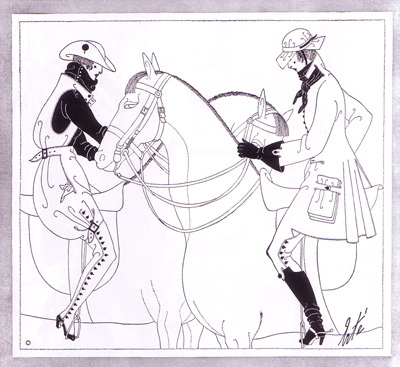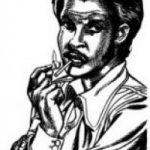Shorter, Edward. Written in the Flesh: A History of Desire University of Toronto Press, 2005
Caveat: due to time restrictions, I’ve only read the “SM and Fetish” chapter of Shorter’s book.
This chapter presents a lot of fodder for further research, and I’m intrigued by Shorter’s idea of Western society moving towards an idea of “total body sex”, from an origin narrowly focused on heterosexual missionary coitus. Sexual behaviour in the early 21st century seems so varied that it’s hard to draw boundaries around “the sexual.”
What is germane for the larger story of total body sex is that SM exquisitely enacts sex over the entire body while fetish represents the entire body in a thematic way. [Pg.204]
I just can’t get behind a lot of his ideas and theories. For instance, he quotes Pico Della Mirandolla about early 16th century ideas of flagellation. He says that Mirandolla argued that flagellation was an inborn desire, but the passage Shorter quotes quite clearly describes an appetite for flagellation as acquired. Mirandolla’s friend describes his desires as “a taste I acquired as a child”, which Shorter insists “[means] that at no point was he not aware of it.” Unless there is some connotation to the verb in the original Renaissance Italian I don’t know about, Shorter is misinterpreting. (pg.204-5) Most early modern scholars viewed sexual deviance as a something acquired from childhood experience, not something inborn. The idea of sexuality as a fixed personal quality is only about 120 years old.
I also dispute his claim that the dominatrix archetype originated in the 20th century. Look at Matthew Lewis’ Gothic novel The Monk for Mathilda, a black-clad, seductive witch.
Shorter says the earliest dominatrix image his can find is a drawing by fashion designer Erté, published in the December 1916 issue of Harper’s Bazaar.

However, the 19th century had plenty of women-as-equestrienne images, so there were plenty of antecedents.
Shorter continues to say that Erté ‘s design was a fluke, and there were no dominatrix-like images in high fashion until the fall 1960 collection of Saint-Laurent offered a mink-edged black alligator jacket for evening wear. After that, black leather has remained a fashion staple, notably in the mod fashions of the early Beatles, the Atomage catalogs and Mrs. Emma Peel in The Avengers. But what about Brando in The Wild One? What about the black leather jacket as the attire of soldiers and pilots, and as street fashion?
I also take issue with Shorter’s whitewashing of Sade, claiming that what the Marquis wrote were only allegories and he wasn’t a violent person. If Sade was something of a paper tiger, it’s only because he spent most of his adult life in prison, with nobody to hurt. His actions when out free in the world, well documented by the French authorities, show that he practised what he preached.

Le Cuir Triomphant by Alan Mac Clyde, illustrated by Carlo, c.1930
It is an intriguing point that while leather and rubber are usually thought of as the fetish materials, they seem to be 20th century fetishes, and 19th century fetishists were invested in softer (feminine?) materials like fur (a la Sacher-Masoch), silk and lace. Shorter says that the recognizable dominatrix archetype first crystallizes in the book Le Cuir Triomphant (“triumphant leather”), published in the early 1930, written by “Alan Mac Clyde” (a shared pseudonym of various French erotica authors) and illustrated by Carlo.
However, what about the black catsuit worn by “Irma Vep” in the French silent film serial Les Vampires, 1915-16?

For further research:
- Nicholas Choirier’s Dialogues on the Arcana of Love and Venus (1660)
- The life and writings of Pierre de Bourdeille, seigneur de Brantôme
- Viennese schoolteacher and sadomasochist Edith Cadivec
- American actress Adah Isaacs Menken, and her performance of Byron’s poem “Mazeppa”



